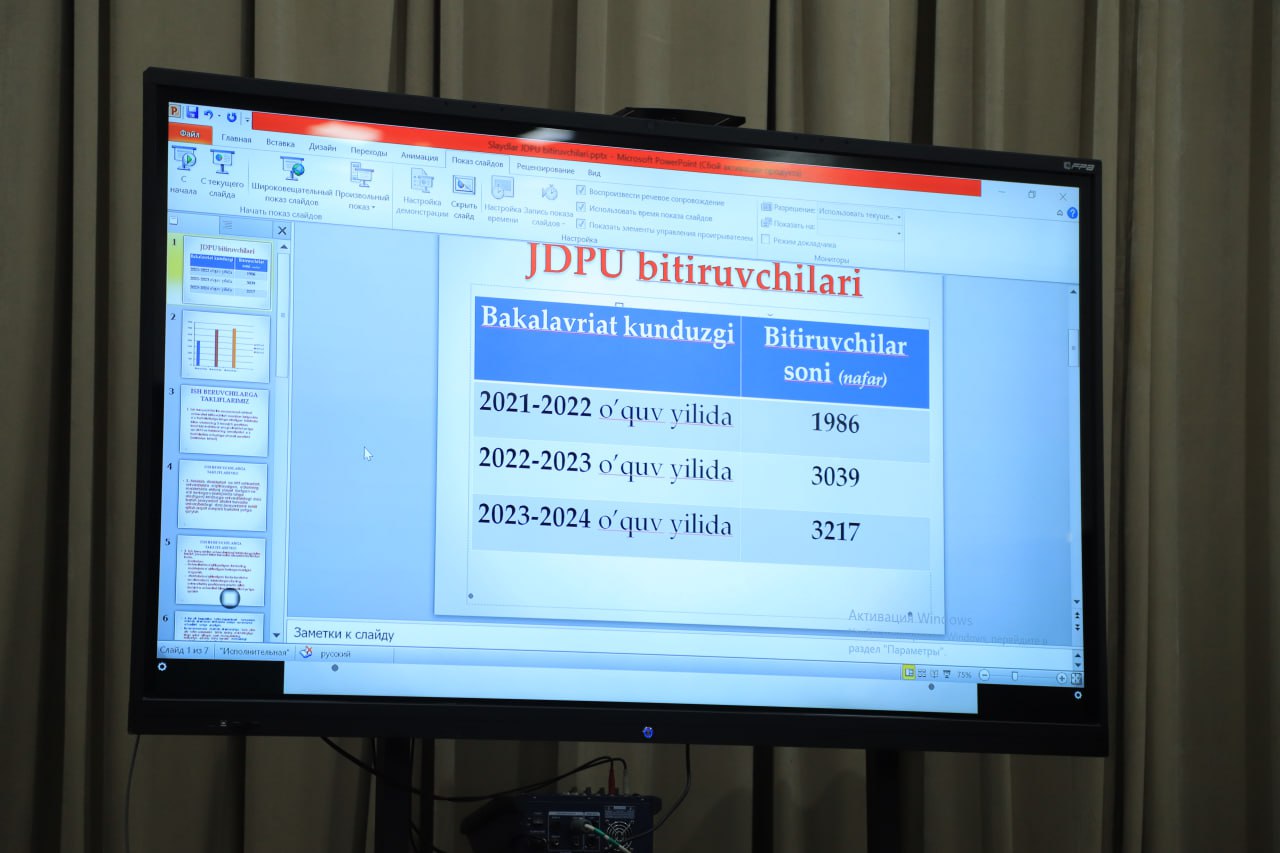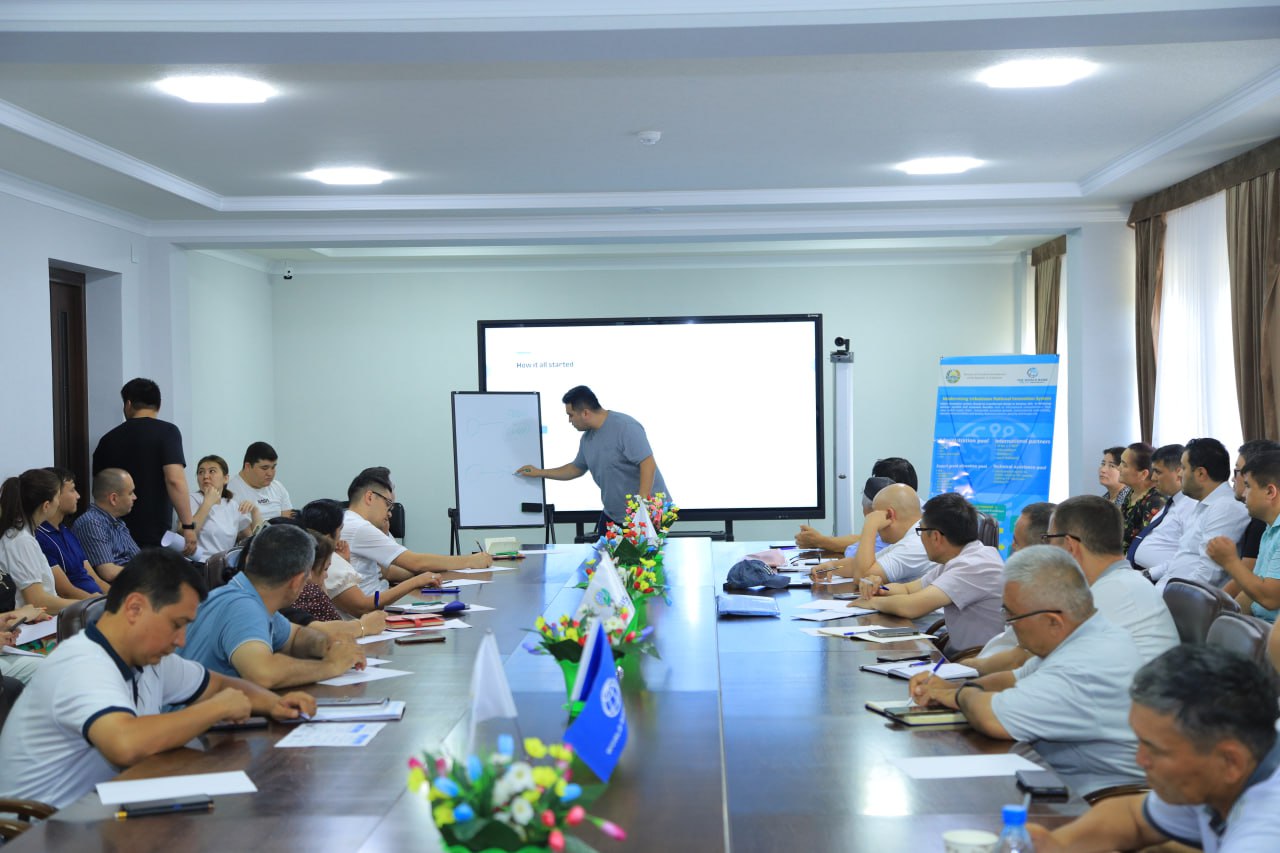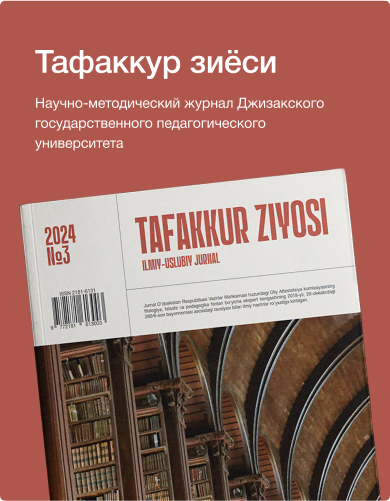Volume 2022 / Issue 5
CORRELATION OF TRANSLATION AND PRAGMATICS CONCEPTS
Soybnazarov Navruzbek Mashrabboy o’g’li
Teacher of English Department
Jizzakh State Pedagogical University
E-mail address: soybnazarovnavruz@jspi.uz
Follow this and additional works at: https://uzjournals.edu.uz/tziuj Part of the Higher Education
Administration Commons
This Article is brought to you for free and open access by 2030 Uzbekistan Research Online. It has been
accepted for inclusion in Mental Enlightenment Scientific-Methodological Journal by an authorized
editor of 2030 Uzbekistan Research Online
209
Mental Enlightenment Scientific-methodological Journal
September, 2022, № 5
ORRELATION OF TRANSLATION AND PRAGMATICS CONCEPTS
Soybnazarov Navruzbek Mashrabboy o’g’li
Teacher of English Department
Jizzakh State Pedagogical University
E-mail address: soybnazarovnavruz@jspi.uz
Abstract: The theoretical significance of this article is the study of the
achievements of pragmatics, as a relatively new branch of linguistics, to generalize
them, the scientific analysis of theoretical views on its prospects. Translation is the
art of recreation, a high artistic creation, even when it is a creativity, it requires
research, hard work, patience from the author of the translation, is a creature that
requires hard work on a variety of materials. It also introduces the concepts of
translation and pragmatics, first impressions of pragmatics, its purpose and
function. The meaning of the concept of translation is very broad, because “What
is translation and pragmatics concepts?” representatives of different fields give
different answers to the question. The article comments in detail on each of the
questions with the use of examples.
Key words: pragmatics concepts; translation; transfer; reproduction of a
text; sense of commentary; narration; artistic creation; linguistic translation;
scientific-philological term; semantic; methodological adequacy of the text;
INTRODUCTION
If we look at the lexical meaning of the word translation, the translation is
from the Persian word “tarzabon” to Arabic. “Tarzabon” means a beautiful speaker,
orator, fluent man. The word “translation” was derived from this word, which was
adopted into Arabic in the form of “translator”. Uzbek writers use such terms as 210
“transfer”, “return”, “turn”, “overthrow” to express the word. For many years,
“translation” has also been used in the sense of commentary, narration,
explanation. Later, the word took on the meaning of a type of artistic creation and
became a scientific-philological term. In general, translation is the reproduction of
a text written in one language or a speech spoken in another language.
MATERIALS AND METHODS
One person says that a translation is to translate a book written in one
language into another language, while another says that it is to explain the idea
expressed in one language to people who speak another language. According to a
third person, movies are also translated, which means that the translation is to
translate the speech of the actor playing the role in one language into the second
third and so on. Approaching translation from the point of view of linguistic
translation can be described as follows:
Translation, a complex form of human activity, is a creative process of re-
creating a spoken expression (text) created in one language on the basis of another
language, while preserving its unity of form and content. Hence, a verbal
expression created by means of the language to which it is replaced by such an
expression, which is formed on the basis of the laws of the language of translation.
In this way, the semantic and methodological adequacy of the texts of the original
and translated languages is created. This definition refers to a process that takes
place between languages, and much of human activity is related to this practice.
For this reason, “translation” means, in the eyes of most people, the process of
translating a text from one language into another.
All of the above comments about the translation have a soul. Because each
of them serves to complement the general understanding of the translation by
describing it on the one hand. So, translation is a multifaceted, multidisciplinary,
complex activity. Translation is one of the most ancient forms of human activity,
thanks to which we can clearly imagine the history of human development in all its
details. 211
Translation is a powerful weapon that serves the interests of friendship,
brotherhood and cooperation between peoples, the expansion of economic,
political, scientific, cultural and literary ties between them.
Translation accelerates the process of interaction of literatures of different
peoples. Thanks to the translated works, readers will enjoy the masterpieces of
world literature, their aesthetic feelings will increase, their tastes will grow, and
they will have an idea about beautiful things.
Translation, as a necessary tool for the perfection of languages, accelerates
their development, increases and improves the richness of vocabulary. Translation
enriches a person’s spiritual life, expands the possibilities of the native language,
developing it.
Thanks to the translation, the reader’s thinking is sharpened and enriched
with new ideas and concepts. Translation serves to establish new attitudes and
views in society. Due to the translation, a new plot, genre is formed. Translation
presents new images, artistic and visual means to the literature of the motherland.
However, it should be borne in mind that the result of this process is also
expressed through translation. This refers to the secondary text, which is a
translation of the original.
The main feature of translation is that it is a word art. The fact that the word
has the power to express an idea, the power of influence, allows the application of
translation at the level of art. The translation should also take into account the
specific nature of the closely interrelated relationship between two peoples and two
languages, two spiritual lives, two national cultures, two epochs and two writers.
Regardless of the text or speech being translated, any work that is translated
from one language to another has two conditions that are common to any
translation:
- The purpose of the translation is to acquaint the reader or listener, who does
not know the language of the original, with the text of the work or the
content of the speech as accurately and completely as possible; 212
- Translation is the expression of something expressed by certain linguistic
means in exactly the same way as other languages.
The practice of translation has emerged that the question of how to translate the
original into the mother tongue is a problem facing translators, and when it comes
to translation, of course, we see several variants of it. Including:
- a) from one language to another – translation into a sibling or non-sibling
language;
- b) to translate from a literary language into one of its dialects and from one
dialect into a literary language or from a dialect of one language into another
literary language;
- c) translating from the language of antiquity to the present modern state of that
language;
At present, the above types of translations include literal translation, creative
translation, free translation, author’s translation, and a number of other translations.
The main reason for this is the different approach to the translation process. But
whatever the type of translation, any translation will have goals and objectives.
RESULT AND DISCUSSION
The purpose of the translation is to recreate the text created with the help of
foreign language linguistic means on the basis of native language materials. To do
this, the translator must first fully understand the original, and then use it fluently
in his own language. In order to fully understand the artistic and aesthetic reality
created by the author, the translator must be able to observe a wide range and
correctly understand the semantic and methodological-aesthetic aspects of the
linguistic means in the work of art, as well as a clear idea of the writer,his
intentions and goals should be clearly understood. As a result, the translation made
by the translator should give the same impression to the reader who cannot read the
work as the original, just as the original gives the reader the same artistic and
aesthetic pleasure. 213
The reader considers the work, which does not arouse interest in translation,
to be written by the author at a low level, that is, the incorrect translation confuses
the reader.
The task of translation is to recreate the unity of form and content of the
original using the means of the native language, carefully mastering the harmonies
and differences between the lexical, grammatical and stylistic phenomena of the
original and translated languages. Failure to adhere to this principle leads to a
violation of the standard of accuracy and expression in translation.
If the author of the original is required to accurately reflect the reality, the
translator is required to interpret the original accurately.
There are two situations that occur in the translation process, namely, first,
to understand, comprehend, and interpret what is being translated in order to
translate. This phenomenon occurs in the native language. Second, it is necessary
to find appropriate means of expression in the language in which the work is
translated, namely words, phrases, grammatical forms.
A comparative study of the means of different bilingual languages to create
translational consistency requires identification of the aesthetic originality of the
literary text, methodological and pragmatic features of its material-logical,
emotionally expressive and figurative system, as well as stylistic basis.
The methodological coloring of language units allows us to decide whether
the different pairs of language units are semantically-methodologically and
pragmatically compatible. Such an analysis of translation enriches the imagination
and views in this area. They imply pragmatic, non-linguistic factors, including
psychological, sociological, ethnographic, national-historical and a number of
other aspects, which are not only linguistic, but also outside the structure of
linguistic knowledge, as well as a high level of knowledge of communicators.
Such a research method makes it necessary to study as much as possible the
functional-pragmatic significance of the language units in the work and their
ability to be adequately translated in certain textual situations. 214
Translation, which is a separate type of interlingual communication, requires
that texts of different languages be equally valuable in content.
The need for coherence between the content of the original and the translated
texts indicates that equivalence is a basic condition of translation. Only a translator
who has mastered the secrets of translation practice and is well-armed with his
theory can create translations equivalent to the original.
As mentioned above, the evaluation of pragmatics in terms of performance is
the basic law and norm of a market economy. After the 1950s, a pragmatic
approach to linguistics became widespread. Pragmatics – new concepts and terms
such as pragmatic linguistics, pragmalinguistics, pragmaphonology,
pragmaphonetics, pragmagrammatics, pragmasyntax, and under these concepts
new concepts and methods of analysis related to a new approach to linguistic
phenomena, their new interpretation have become widespread.
Pragmatics is important in translation, and its lexical meaning, when
translated from the Greek word ‘pragma’, means action and work.
The term “pragmatics” was coined in the late 1930s by Ch.U. Morris as a
branch of semiotics. Morris divided semiotics into three parts:
- Semantics – explores the relationship of characters to an object;
- Syntax – explores inter-character relationship;
- Pragmatics – a section that examines the attitude of the speaker towards
language signs.
Although these three areas are side by side in the initial comments, Morris later
notes that the concept of “pragmatics” is much broader than the other two areas –
syntax and semantics. Some sources say that pragmatics came to science as a
philosophical concept. In particular, “Pragmatics is in fact a philosophical concept
that was used even in pre-Socratic times and was later adopted by philosophers
such as J. Locke and E. Kant from Aristotle. Thus a stream of pragmatism emerged
in philosophy. The main period of development of this movement is the XIX-XX
centuries. Especially in the 20s and 30s of the twentieth century, the widespread 215
promotion of the ideas of pragmatism began to be clearly felt. The services of Ch.
Pierce, R. Carnap, Ch. Morris, L. Wittgenstein in the widespread dissemination of
this propaganda in America and Europe should be noted [38, pp. 40-41].
The emergence and formation of pragmatics reinforced by the ideas of
Ch.S.Pierce as a field of linguistic research Influence of logical-philosophical
theory of speech phenomena of J. Austin, J.R.Syorl, P.F.Stroson and others in the
late 60s and early 70s started under.
Charles Sanders Pierce (1839-1914) was one of the founders of the direction of
philosophical pragmatism that dominated America in the late nineteenth and early
twentieth centuries. The main idea of this philosophical system is to study the
meaning of the semiotic sign (including the linguistic sign) in relation to the effect,
results, success of the action performed through this sign.
The author of this principle, Ch. Pierce, was one of the first to argue that the
factor of the subject of communicative activity should be taken into account in the
framework of sign theory.
According to Pierce, the relationship area of a character consists of three
directions:
- a character, more precisely, a representative, a means of having a material
appearance that replaces something;
- the means in the mind of the perceiver and giving the description of the sign
– the interpreter;
- the object reflected in the symbol
CONCLUSION
In conclusion, pragmatics is a field of study in linguistics that studies the
movement of language signs in speech. Linguistic pragmatism does not have a
clear form. It includes a set of issues related to the speaker and the listener, their
interaction in the speech process. The pragmatic potential of a text is characterized
by the content and form of the information. Content and form are pre-existing
means of expression in the language, and the author uses them only appropriately. 216
Only a translator who has mastered the secrets of translation practice and is well-
armed with his theory can create translations equivalent to the original. The
translation, which is equivalent to the original, is itself pragmatic of the original
features.
REFERENCES:
[1]. Soybnazarov, Navruzbek Mashrabboy ogli. ‘’ Tarjima va tarjimada
mukammallikning dolzarbligi’’. International scientific-practical conference. 2021.
[2]. Soybnazarov, Navruzbek Mashrabboy ogli. ‘’ Formation of communicative
and general cultural competences of students in russian lessons’’. ‘’Science and
Education’’ scientific journal. March 2022.
[3]. Soybnazarov, Navruzbek Mashrabboy ogli. ‘’Improving essay writing skills in
English’’. Respublika kofrensiyasi. 2022.
[4]. Aznaurova E.S. Pragmatics of the artistic word. – Tashkent, 1988. – 7p.
[5]. Alekseeva, I. S. Introduction to Translation Studies: a textbook. – 2nd ed., – M
.: Academy, 2006. – 348 p.
[6]. Drozdova T.V.Pre-understanding in the process of understanding a scientific
text // Vocabulary in different types of discourse. M., 2003.60-68 p.
[7]. Komissarov V.N. Translation theory (linguistic aspects). – M.: Higher school,
- – 253 p.
[8]. Morris C.W. Foundations of the theory of signs. Per. from English. Semiotics /
Comp., entry. article and general ed. Yu.S. Stepanova. M.: Raduga, 1983. -37-89 p.
[9]. Dorokhova Yu.E. Interaction of text factors and dictionary correspondences
when choosing a translation equivalent: Dis. cand. philol. Sciences. -M., 2002. 173
[10]. Semenov A.L. Fundamentals of the general theory of translation and
translation activity: textbook. allowance. – M. : Academy, 2008. – 160 p.
[11]. Dobrovolsky D.O. Semantics of idioms as a translation problem //
Translation and linguistics of the text. M.: VSP, 1994. 96-104 p. [12]. Chang N.F. (1996): “Towards a better general theory of equivalent effect” in
Babel. No.42 vol.1-17 p.





